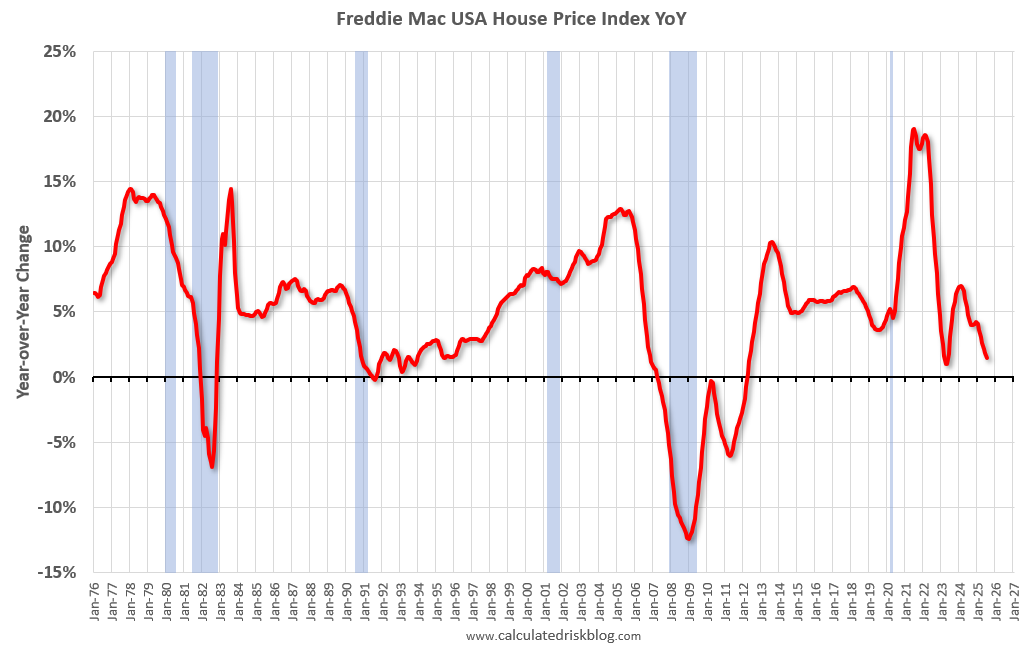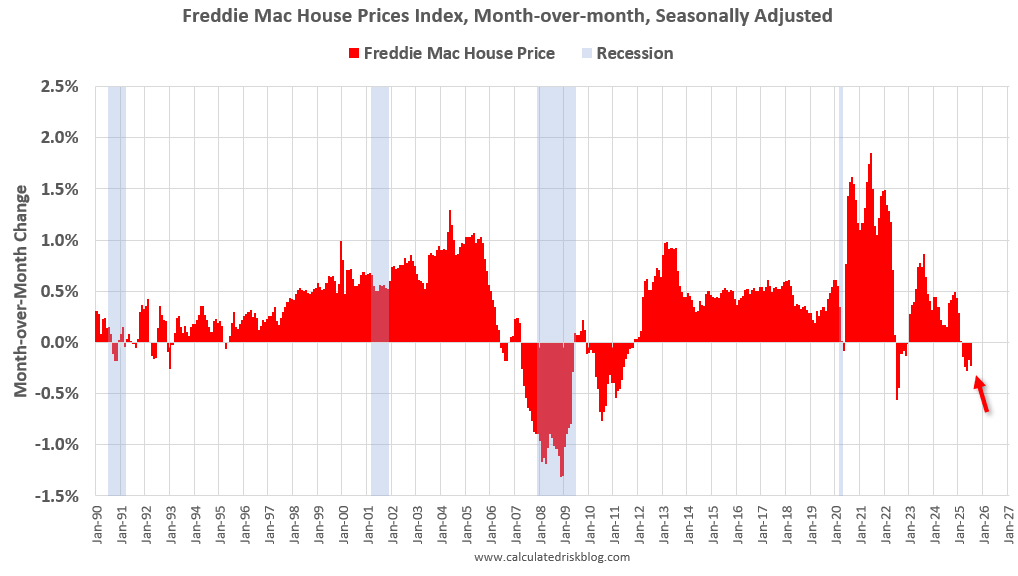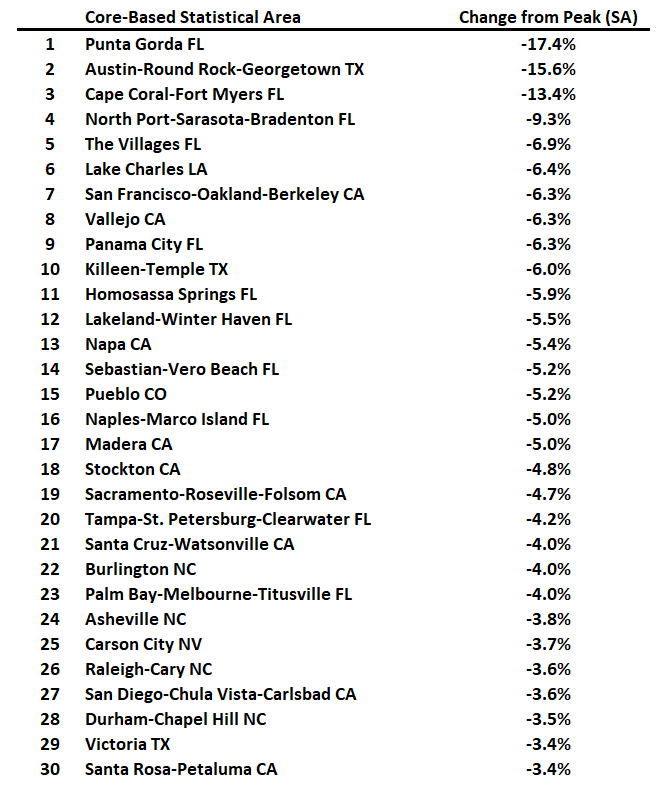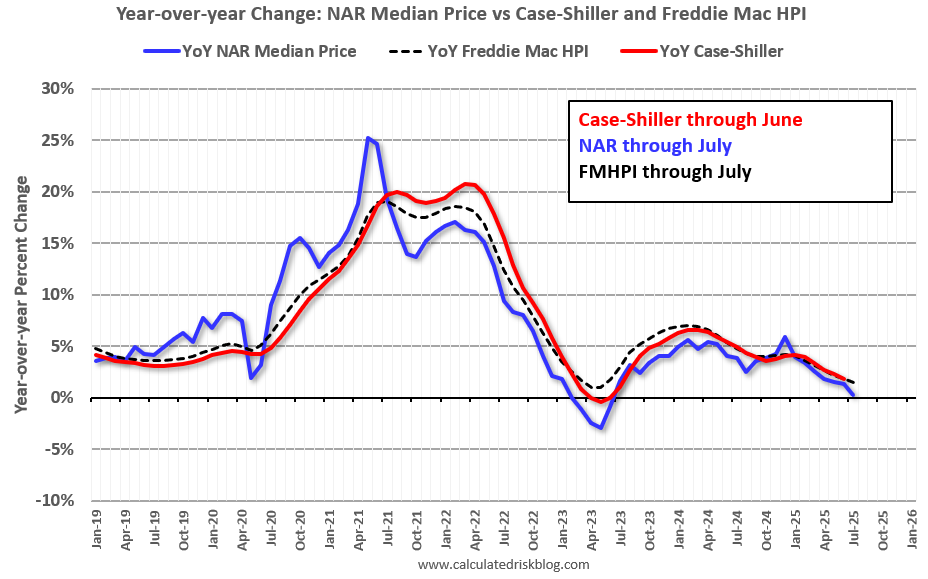Freddie Mac House Price Index Declined in July; Up 1.4% Year-over-Year
Punta Gorda is the worst performing city
Note: The Freddie Mac index is a repeat sales index using only loans purchased by Fannie and Freddie and includes appraisals. See FAQs here. Freddie has data for all states and many cities. For house prices, I’m currently following Case-Shiller, FHFA, CoreLogic, ICE, the NAR median prices, and this Freddie Mac index.
Freddie Mac reported that its “National” Home Price Index (FMHPI) decreased -0.22% month-over-month (MoM) on a seasonally adjusted (SA) basis in July. On a year-over-year (YoY) basis, the National FMHPI was up 1.4% in July, down from up 1.8% YoY in June. The YoY increase peaked at 19.0% in July 2021, and for this cycle, bottomed at up 0.9% YoY in April 2023.
The second graph shows the month-over-month (MoM) change in the national FMHPI, seasonally adjusted.
The seasonally adjusted FMHPI decreased -0.22% MoM on a seasonally adjusted (SA) basis in June. This was the 5th consecutive MoM decrease in the SA index. Over the last 3 months, this index has decreased at a 2.7% annual rate and decreased at a 1.1% annual rate over the last 6 months.
House prices are under pressure and will likely turn negative year-over-year by the end of 2025.
31 States and D.C. have seen price declines Seasonally Adjusted
As of July, 31 states and D.C. were below their previous peaks, Seasonally Adjusted. The largest seasonally adjusted declines from the recent peaks are in D.C. (-5.2), California (-3.3%), North Carolina (-2.9%), Maryland (-2.7%), and Florida (-2.5%).
For cities (Core-based Statistical Areas, CBSA), 254 of the 384 CBSAs are below their previous peaks.
Here are the 30 cities with the largest declines from the peak, seasonally adjusted. Punta Gorda has passed Austin as the worst performing city. Note that 4 of the 5 cities with the largest price declines are in Florida. And 11 of the 30 cities are in Florida.
More cities (9) in California are now on the list.
Here is a comparison of year-over-year change in the FMHPI, median house prices from the NAR, and the Case-Shiller National index.
The FMHPI and the NAR median prices (up 0.2% YoY in July) appear to be leading indicators for Case-Shiller. The Case-Shiller index was up 1.9% YoY in June. The FMHPI is suggesting the Case-Shiller index will likely be up less year-over-year in the July report compared to June.
As inventory increased in 2025, and sales remained low, house price growth (year-over-year) slowed and will likely turn negative towards the end of 2025.





